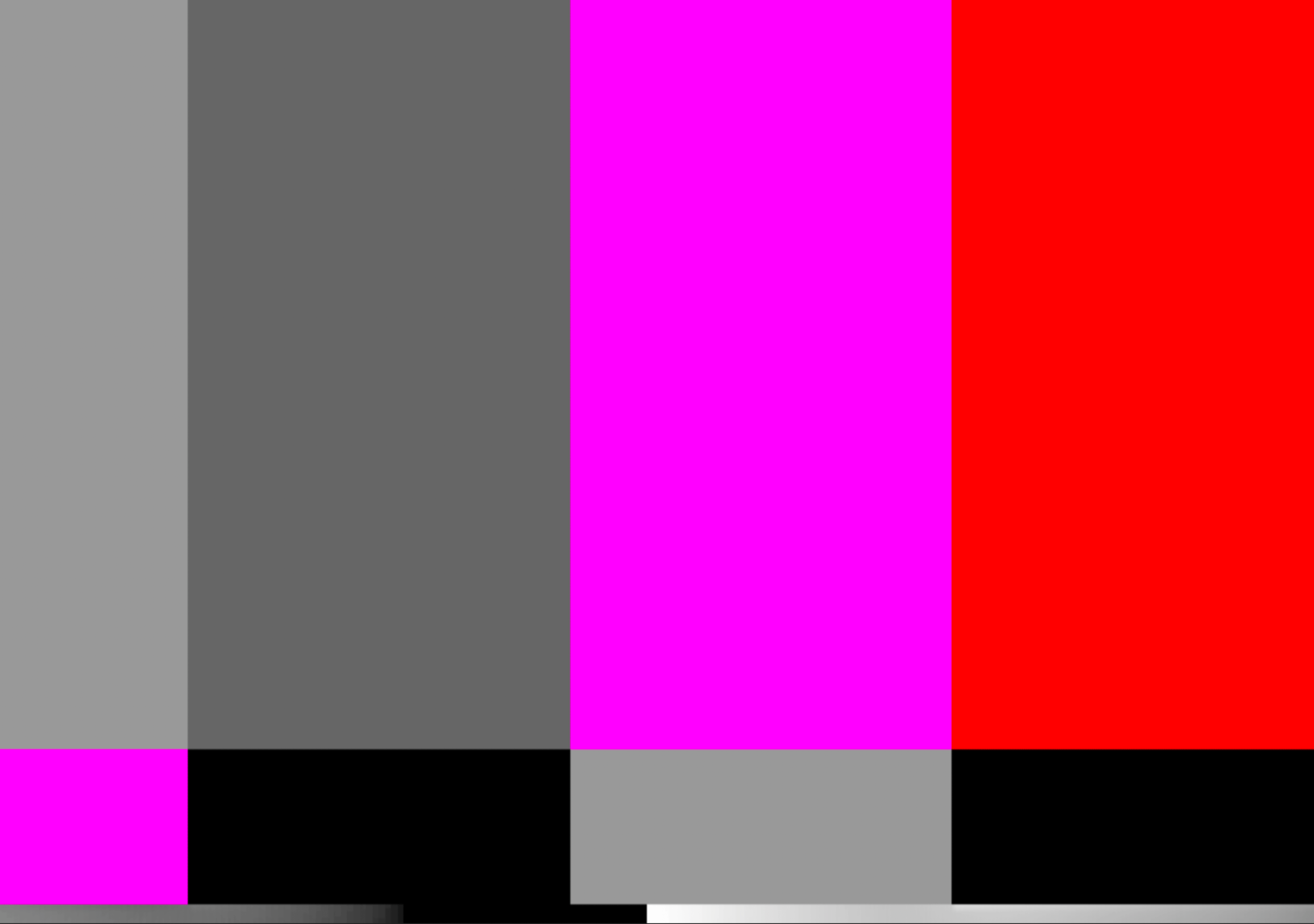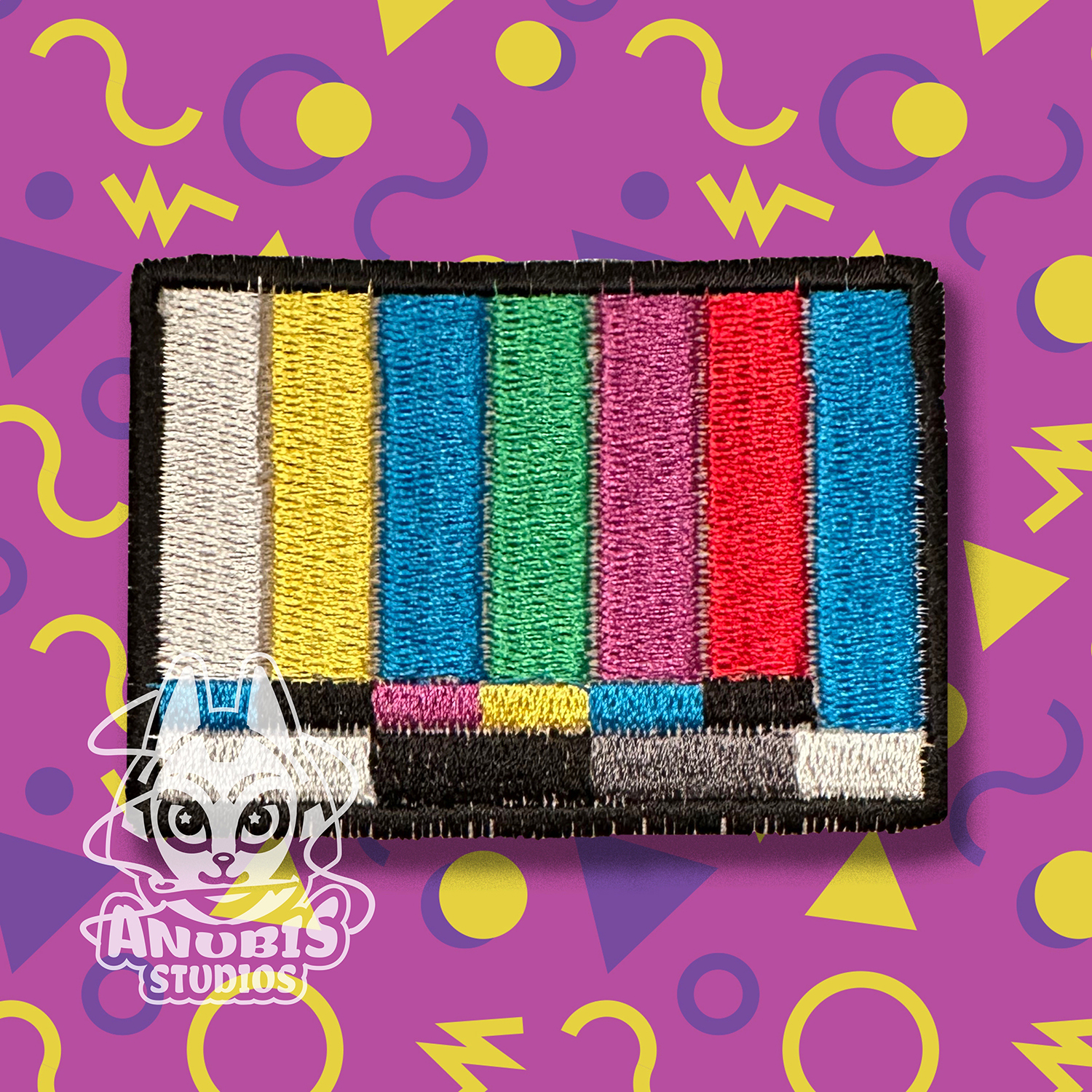Have you ever wondered what those colorful bars on your TV screen mean? Color bars are more than just a pretty sight. They're essential tools in the world of video production, broadcasting, and even graphic design. If you've ever been curious about these vibrant lines, you're in the right place. Today, we're diving deep into the world of color bars and uncovering their secrets.
Color bars have been around since the early days of television, but they still play a crucial role in modern media. Whether you're a professional videographer or just someone who loves tinkering with video settings, understanding color bars can take your skills to the next level. Let's explore why they matter and how they work.
Now, before we dive into the nitty-gritty details, let me tell you something cool. Color bars aren't just for tech nerds or industry professionals. They're also a great way to calibrate your home entertainment system or even test your computer monitor. So buckle up, because we're about to uncover everything you need to know about color bars!
- What To Say On A Headstone A Heartfelt Guide To Honoring Your Loved Ones
- Autumn Falls Net Worth Unveiling The Rising Stars Financial Empire
What Are Color Bars?
Color bars are essentially standardized patterns of colors displayed on a screen. These patterns consist of horizontal bars arranged in specific sequences, each representing a different color. The most common color bar pattern is the SMPTE color bar, which includes red, yellow, green, cyan, blue, magenta, black, and white. But wait, there's more!
These bars aren't just random colors thrown together. They're designed to help calibrate displays, check video equipment, and ensure consistent color reproduction across devices. Think of them as the "rulers" of the video world, making sure everything looks just right.
Why Are Color Bars Important?
In the world of video production, color bars are like the secret sauce that keeps everything running smoothly. They help professionals ensure that the colors you see on your screen match the original footage. Imagine watching a movie where the greens look yellow or the blues look purple—yeah, not ideal.
- Bryan Callen Net Worth The Comedy Kingpins Financial Empire Unveiled
- Joe Concha Net Worth A Deep Dive Into His Financial Empire And Journey
Here’s why color bars matter:
- They provide a reference for accurate color reproduction.
- They help calibrate monitors and projectors.
- They assist in troubleshooting video equipment issues.
- They ensure consistency across different devices and platforms.
Even if you're not in the video industry, color bars can be useful for everyday tech enthusiasts who want to fine-tune their screens.
History of Color Bars
Color bars have been around for decades, and their origins trace back to the early days of television broadcasting. In the 1950s, engineers needed a way to ensure that the colors transmitted over the airwaves matched what viewers saw on their screens. Thus, the first color bar patterns were born.
Fast forward to today, and color bars are still widely used in both analog and digital formats. The SMPTE color bar standard, established by the Society of Motion Picture and Television Engineers, has become the go-to reference for professionals worldwide. It's like the gold standard of color calibration.
Types of Color Bars
SMPTE Color Bars
The SMPTE color bars are the most widely recognized and used type. They consist of eight vertical bars arranged in a specific order: white, yellow, cyan, green, magenta, red, blue, and black. These bars are designed to test color accuracy, contrast, and brightness.
EBU Color Bars
The European Broadcasting Union (EBU) developed its own version of color bars, which differ slightly from the SMPTE standard. The EBU bars include additional patterns like crosshatch and pluge (Picture Line-Up Generation Equipment) signals for more precise testing.
Digital Color Bars
With the rise of digital video, new types of color bars have emerged. Digital color bars often include additional test patterns, such as grayscale ramps and chroma bursts, to account for the nuances of modern display technology.
Each type of color bar serves a specific purpose, whether it's for broadcast television, film production, or digital media. It's like having different tools in your toolbox for different jobs.
How Do Color Bars Work?
Color bars work by providing a standardized reference for color and brightness levels. When you display color bars on a screen, you can compare them to known values to ensure that your equipment is functioning correctly. For example, if the red bar appears too bright or the blue bar looks washed out, it could indicate a problem with your monitor or video settings.
Here's a quick breakdown of how color bars function:
- Each bar represents a specific color and intensity level.
- The bars are arranged in a way that allows for easy comparison.
- They help identify issues like color distortion, brightness imbalance, or contrast problems.
Think of color bars as a diagnostic tool for your screen. Just like a doctor uses a stethoscope to check your heart, professionals use color bars to check the health of their displays.
Using Color Bars for Calibration
Calibrating your monitor or TV is easier than you might think, and color bars are the perfect tool for the job. Here's how you can use them:
- Display the color bar pattern on your screen.
- Adjust the brightness and contrast settings until the bars look balanced.
- Check for any discrepancies in color reproduction and tweak the settings accordingly.
By using color bars, you can ensure that your screen displays colors accurately and consistently. This is especially important if you're working with photos, videos, or graphic designs that rely on precise color representation.
Applications of Color Bars
Broadcasting
In the broadcasting industry, color bars are used to ensure that the video signals transmitted to viewers' homes are accurate and consistent. Broadcasters rely on these patterns to calibrate their equipment and maintain high-quality output.
Video Production
Videographers and filmmakers use color bars to check the performance of their cameras and monitors. By comparing the color bars on their screens to the original footage, they can make adjustments to achieve the desired look.
Home Entertainment
Even casual users can benefit from color bars. If you're setting up a new TV or projector, displaying color bars can help you fine-tune the picture settings and get the best possible image quality.
No matter your level of expertise, color bars have something to offer. They're like the Swiss Army knife of video tools.
Common Misconceptions About Color Bars
Despite their importance, color bars are often misunderstood. Here are some common misconceptions:
- Color bars are only for professionals: While they're widely used in the industry, anyone can benefit from using color bars to calibrate their devices.
- They're outdated: Color bars have evolved with technology and remain relevant in both analog and digital formats.
- They're only for TVs: Color bars can be used to calibrate computer monitors, projectors, and even mobile devices.
Don't let these myths fool you. Color bars are versatile tools that can enhance your viewing experience, no matter what device you're using.
Future of Color Bars
As technology continues to advance, the role of color bars is likely to evolve. With the rise of 4K, 8K, and HDR displays, new standards and patterns may emerge to address the unique challenges of these formats. However, the fundamental principles of color bars will remain the same: providing a reliable reference for accurate color reproduction.
Who knows? Maybe one day we'll have color bars that adapt in real-time to changing lighting conditions or even account for individual preferences in color perception. The possibilities are endless!
Conclusion
In summary, color bars are indispensable tools in the world of video and display technology. Whether you're a professional in the industry or just someone who wants to get the most out of their home entertainment system, understanding color bars can make a big difference.
Here’s a quick recap of what we covered:
- Color bars are standardized patterns used to calibrate and test displays.
- They come in various types, such as SMPTE, EBU, and digital color bars.
- They're used in broadcasting, video production, and home entertainment.
- Anyone can benefit from using color bars to improve their viewing experience.
So, what are you waiting for? Grab your color bars and start calibrating your screens today! And don't forget to share this article with your friends and family who might find it useful. Together, let's make the world a more colorful place—one bar at a time.
Table of Contents
- What Are Color Bars?
- Why Are Color Bars Important?
- History of Color Bars
- Types of Color Bars
- How Do Color Bars Work?
- Using Color Bars for Calibration
- Applications of Color Bars
- Common Misconceptions About Color Bars
- Future of Color Bars
- Conclusion



Detail Author:
- Name : Arden Strosin PhD
- Username : camron.goldner
- Email : isabel.hirthe@torp.biz
- Birthdate : 1995-03-12
- Address : 31624 Boehm Course Apt. 214 West Shyannton, HI 24800-1555
- Phone : 870.846.8791
- Company : Wunsch Inc
- Job : Waitress
- Bio : Sed velit enim doloribus quis dolorem. Quod praesentium quia a debitis. Qui officiis consectetur beatae quia voluptatem.
Socials
twitter:
- url : https://twitter.com/jkoepp
- username : jkoepp
- bio : Iure qui voluptate aperiam dicta. Voluptates cum eaque rerum dolor labore ut animi. Illum unde doloribus similique exercitationem minima.
- followers : 4333
- following : 1974
tiktok:
- url : https://tiktok.com/@jaylon_koepp
- username : jaylon_koepp
- bio : Eius quia odit molestiae provident pariatur aut sunt ut.
- followers : 2609
- following : 1443
instagram:
- url : https://instagram.com/jaylonkoepp
- username : jaylonkoepp
- bio : Doloribus quidem quas accusamus quisquam. Fugit eum molestiae quos officiis.
- followers : 2172
- following : 1839
